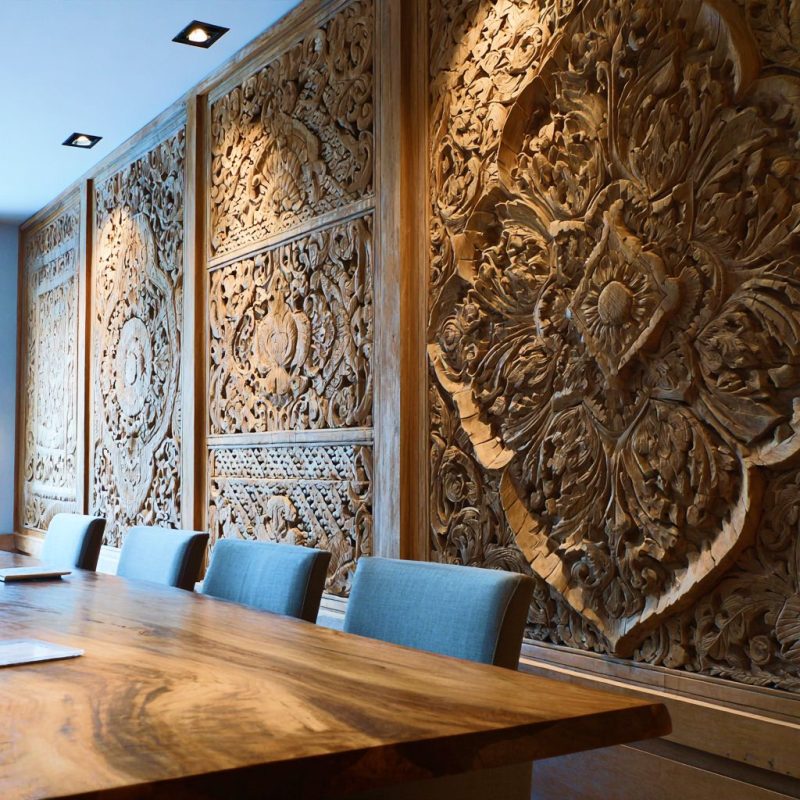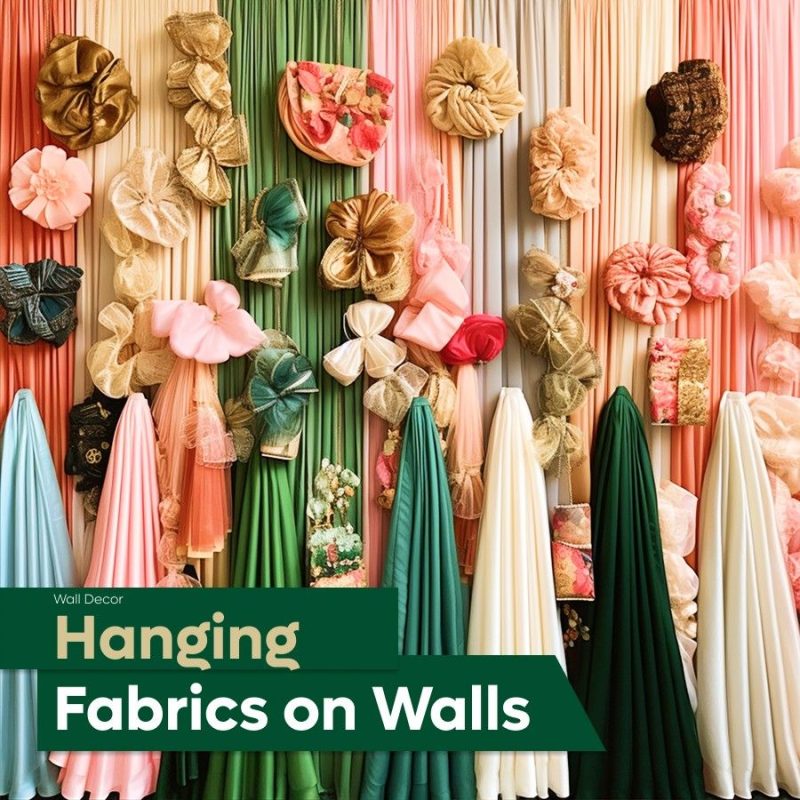In interior design and fit-outs, the approach of drawing attention while adding depth to the overall aesthetic, we refer to it as adding focal points. Without a focal point, a room may feel scattered or lack a clear sense of direction. This requires careful placement of design elements in order for visitors to perceive the right aspects of the space. Just like photography, creating focal points has always been a handy tool for crafting visually compelling and well-balanced spaces. In this case, we leverage statement piece of furniture, dramatic feature walls, or strategizing with feature lighting and bold accents. Have you been struggling to transform your residential, commercial, or hospitality spaces into captivating environments? Here are the techniques for elevating interiors with style and purpose.

Methods to Create Strong Focal Points
To create compelling focal points in interior design and fit-outs, designers use various techniques. Here are some of the most effective methods:
-
Statement Walls and Feature Walls
These are powerful design elements for instantly drawing attention and adding personality to a space. The abundance of bold colors, decorative wallpaper, layering textured finishes, modern metallics, artistic murals, or intricate paneling has simplifies this. They explicitly define statement interior walls which enhance the overall ambiance while serving as focal points. This way, establishing depth and interest within an ordinary room into a visually captivating environment. For instance; A corporate boardroom can have a wood-paneled wall with integrated LED lighting and the company’s logo in metal which gives a sophisticated and professional look. Meaning, most modern office fit-outs now incorporate such feature walls to balance aesthetics with functionality thus memorable.
-
Strategic Use of Lighting
Lighting plays a crucial role in guiding attention while enhancing the ambiance with in interior designs and fit-outs. Through a combination of ambient, task and accent lighting, professional interior designers highlight architectural refinements, artwork, or statement furniture pieces. creating depth and visual interest. Meanwhile, pendant lights, recessed fixtures, and LED strips can also be strategically placed to draw the eye and enhance the overall aesthetic appeal. With careful layering of light sources, spaces become more dynamic, functional, and inviting which ensures a perfect balance between practicality and design sophistication. For example; In a high-end restaurant interiors have always used grand chandelier positioned above the main dining area to provide illumination while as a stunning focal point.
-
Artwork and Sculptures
Incorporating artwork and sculptures is also a powerful way to create focal points in interior design and fit-outs. You can strategically place paintings, gallery wall or sculptural pieces to add character, depth, and a sense of refinement to any interior. With large-scale artworks, they serve as statement pieces which draw the eye and set the tone for the entire room. On the other hand, sculptures introduce dimension and texture. You must have seen this before in corporate offices, luxury residences and hospitality spaces. They feature carefully curated art aimed at enhancing aesthetics as well as sparking conversation alongside personalizing the space. In most modern hotel lobbies, you’ll notice an oversized contemporary sculpture in the center meant to reinforce the brand’s luxury image while captivating guests.
-
Furniture as a Focal Point
Since furniture explicitly combines both form and function to anchor a space, it defines a striking focal point in interior designs. A bold sofa, an elegant meeting table, or a uniquely designed office desk draws attention while setting the tone for the entire room. What you should know is that statement furniture pieces perfectly contribute to the room’s overall flow and usability. You only need to select pieces with distinctive shapes, rich textures or even contrasting furniture colors. Thoughtfully placing such furniture with complementary décor emphasizes a central design element as well as feel cohesive and inviting. As a professional interior designer struggles for a balanced interior its also endures an impactful look. For instance, Dubai premium office fit-outs have become trendy with custom L-shaped executive desks. These are combined with sculptural chrome metal legs and elegant marble flooring in most of the CEO’s workspaces.
-
Architectural Features
Architectural features naturally lie on elements like grand archways, exposed beams, decorative moldings and statement staircases to draw our eyes. Meanwhile, such structural fit out details come up with a unique style of modern, industrial and classic interior design. To make them standout, you can also highlight them using lighting, textures, or contrasting finishes for a sophisticated and cohesive look. In fact, they make the space feel intentional and refined while serving their functional purposes by defining a focal point. Just like a penthouse apartment with floor-to-ceiling glass windows overlooking the city skyline making its view the natural focal point. Isn’t this what’s demand in modern minimalistic interior designs trending in Dubai?
-
Rugs and Flooring Designs
From carpet flooring consideration, a well-chosen rug perfectly anchors a seating area. It simply introduces color and pattern within an open-plan layout using fabric textures. Similarly, unique flooring materials—such as intricate tile patterns, herringbone wood, or polished concrete draw attention within overall interior design aesthetic. You simply have to strategically select rugs and flooring which contrast or complement the surrounding elements. Just know that patterned or contrasting flooring subtly guides the eye to specific areas within a room. So, you can then create a harmonious yet striking foundation that ties the entire space together. For example; In one of the best interior design projects of a hotel lounge. A circular area rug with bold geometric patterns was placed beneath a central seating arrangement. to define that space and draw attention.
Balancing the Focal Point with the Rest of the Space
While a focal point is meant to stand out, it should blend harmoniously with the rest of the interior. Here’s how to maintain balance:
- Avoid overcrowding a room. It should simply have one dominant focal point rather than multiple competing elements.
- Use complementary colors and materials as much as possible. Reason being that the focal point should align with the room’s overall theme for a seamless look.
- As discussed before, layer interior design elements. Simply incorporate furniture, lighting and décor which enhances, rather than overpower your focal point.
 Focal Points Tips in Different Fit-Out Scenarios
Focal Points Tips in Different Fit-Out Scenarios
- Office Spaces – A biophilic feature wall with vertical greenery in an open-plan office acts as a focal point as well as promoting a refreshing, stress-free work environment.
- Retail Stores – A luxury boutique can use a dramatic display table with premium handbags or jewelry under spotlight illumination as the focal point.
- Hospitality Fit-Outs – A resort reception area can have a massive water feature with cascading lights, creating an unforgettable first impression.
Mastering Focal Points in Interior Design
Creating focal points in interior design and fit-outs is both an art and a science. Be it in offices, residentials, retail spaces, or hospitality settings, a well-planned focal point is meant for aesthetics, branding reinforcement, functionality and user experience. Contact DesignMaster, Dubai interior design contractors to guide you on carefully selecting statement walls, lighting, artwork, furniture as well as architectural features desired for craft visually engaging spaces.












